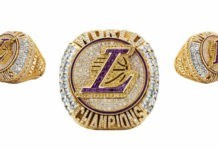If you’re working on a CV, the hybrid CV format might be for you. Here, we’ll discuss what a hybrid CV is, what advantages it holds, and how you can leverage a hybrid CV to make your next career move.
Need help with the technical aspects of resume or CV writing? Learn more about how to make a good resume or CV.
What Is a Hybrid CV?
A modern CV is as important to landing the job as keeping up with new technology is to staying on top of the game in your career. So before we dive into the hybrid CV format, let’s discuss what a CV is and how it differs from a resume.
CV is short for curriculum vitae, a Latin phrase meaning “course of life.” According to Indeed, a CV is “a detailed document sharing not only your career history but also your education, awards, special honors, grants or scholarships, research or academic projects and publications.”
From this description, it is easy to discern that a CV is longer than a resume. In fact, that is their primary difference. Resumes are generally limited to one page, while CVs are several pages in length.
Like resumes, CVs are usually written in a reverse-chronological format – starting with your most recent experience and working backward. Also like resumes, functional CVs can also be used. Functional CVs focus on your skills and how you have used and obtained them – even if the experience was not recent or directly related to your education or employment.
The hybrid CV combines the best aspects of both the chronological and functional CVs – it follows a basically chronological layout while also focusing on and highlighting skills and abilities.
Should I Use a Hybrid CV?
When deciding whether to use a hybrid CV – or whether to use a CV at all – consider where the job is located and the type of job.
Where the Job is Located
When considering job listings, you might notice that some request a CV while others ask for a resume. Here in the U.S., CVs are generally only used in academia. In many other parts of the world, however, CVs are expected with every job application (and in some places, the terms CV and resume are used interchangeably). In either of these instances, do your research to determine exactly what information the organization is requesting.
Job Type
As mentioned above, academics is generally the only field that requires a CV in the United States. This includes teaching and other roles in post-secondary education.
Hybrid Format Versus Other CV Formats
According to the job listing site Betterteam, a hybrid or combination CV “is the perfect option for accomplished job applicants as it allows them to showcase their skills, education, work experience, and achievements.”
This resource also recommends using the hybrid CV when “applying for positions where work experience, education, and skills carry equal weight” or if you are an inexperienced candidate, “as it allows you to choose which aspects of your career you want to highlight.”
How to Write a Hybrid CV
Like a resume, there are several essential parts to every CV. These include:
- Contact information – your name, professional email, phone number, and LinkedIn profile or professional website.
- Skills
- Work experience
- Education
Your skills, work experience, and education can be listed in any order you like. Include them in order of relevance – put the one that you think best fits with the job at the top. You don’t have to include every single thing you’ve ever done – you can omit irrelevant experiences.
You can also add a personal profile to your CV, directly below the contact information. The personal profile is an optional section that functions much like a cover letter. Consider this section especially if you are not able to upload a separate cover letter.
Other optional sections include:
- Volunteerism
- Awards and honors
- Certifications
- Licenses
- Professional or academic projects
- Hobbies and interests
- Extracurricular activities
- Professional associates
- Publications
- Languages spoken
- Training
- Continuing education
- Conferences
- Other qualifications
- Other accomplishments
In the past, CVs also included a list of references. This is not generally expected today, but your hiring manager may request references. Create a reference list in a separate document for easy access. Each reference should include the person’s name, title, organization, and accurate, up-to-date phone numbers and email addresses.
When you’ve got your information together, look over your CV. Proofread it and use a software assistant like Grammarly. Use a simple font at a 10 to 12 point size. Remove graphics or other distracting elements.
Finally, create a footer with your name and page numbers. This will keep your CV together if it is printed on multiple pages. Save the file as a PDF so that online submissions will retain the proper formatting.








